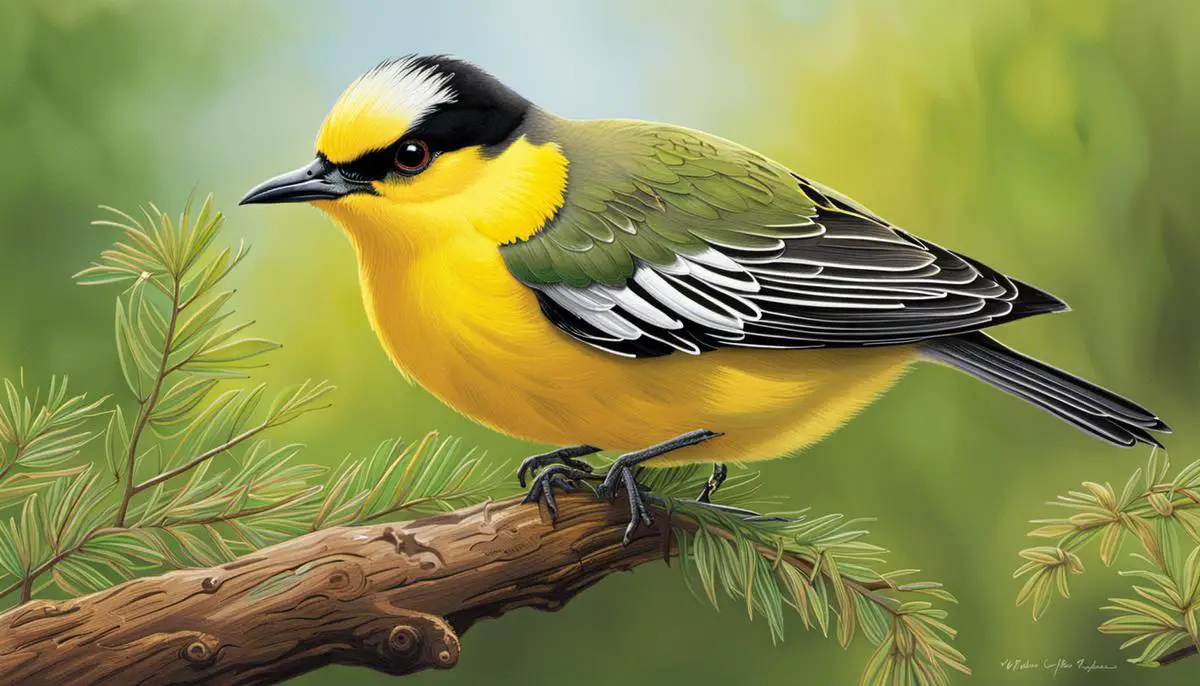Yellow-bellied birds of Texas, jewel-like creatures adorned with bright colorations that pull the gazes of birdwatchers and nature lovers, can be found in the diverse landscapes of Texas. These avian species, so named for their vibrant underbellies, present a fascinating array of characteristics, ranging from unique physical attributes to specific behavioral traits. Through this exploration, we investigate the nomadic patterns, feeding habits, and ecological influence of these captivating birds. The regional importance of their presence and the conservation efforts to protect their existence will shed light on the intertwined relationship between Texas’ flora and fauna and these striking yellow-bellied species.
Identifying Characteristics of Yellow-Bellied Birds
Characteristics of Yellow-Bellied Birds in Texas
When discussing the yellow-bellied birds of Texas, one must take into account their varied physical attributes. Species such as the Warbling Vireo and Pine Warbler are on the smaller end, measuring between 4.7 to 5.5 inches long. Conversely, the Summer Tanager and Western Kingbird are larger, reaching lengths of 7.5 to 8.7 inches.
It’s interesting to note that despite the name “yellow-bellied”, not all of these birds boast a yellow underbelly. For example, male Summer Tanagers are resplendent in red, while females and juveniles are more yellow-green. However, Warbling Vireos and Pine Warblers do sport a lighter yellow tint on their undersides.
Other distinctive markings, such as wing-bars, eyebrows, or rump patches are useful for identification. The Yellow-bellied Flycatcher has two light wing-bars with an eye ring, and the Couch’s Kingbird, on the other hand, has a gray head, olive upperparts, and a bright yellow belly and undertail coverts minus the wing bars.
Behavior also varies among these bird species. For instance, the Warbling Vireo is an active bird that favors higher levels of deciduous trees. The Pine Warbler, true to its name, is often found in pine forests all year round. Summer Tanagers, insectivores in nature, can be spotted patiently hunting for bees and wasps in trees. The Western Kingbird shows a stark contrasting behavior, with its aggressive and territorial nature often leading it to chase off larger birds from its nesting territory.
For bird-watchers, understanding of these species’ habits and preferred habitats can greatly enhance the experience. Paying attention to the environment and the season can hint at which of these birds are likely to be spotted.
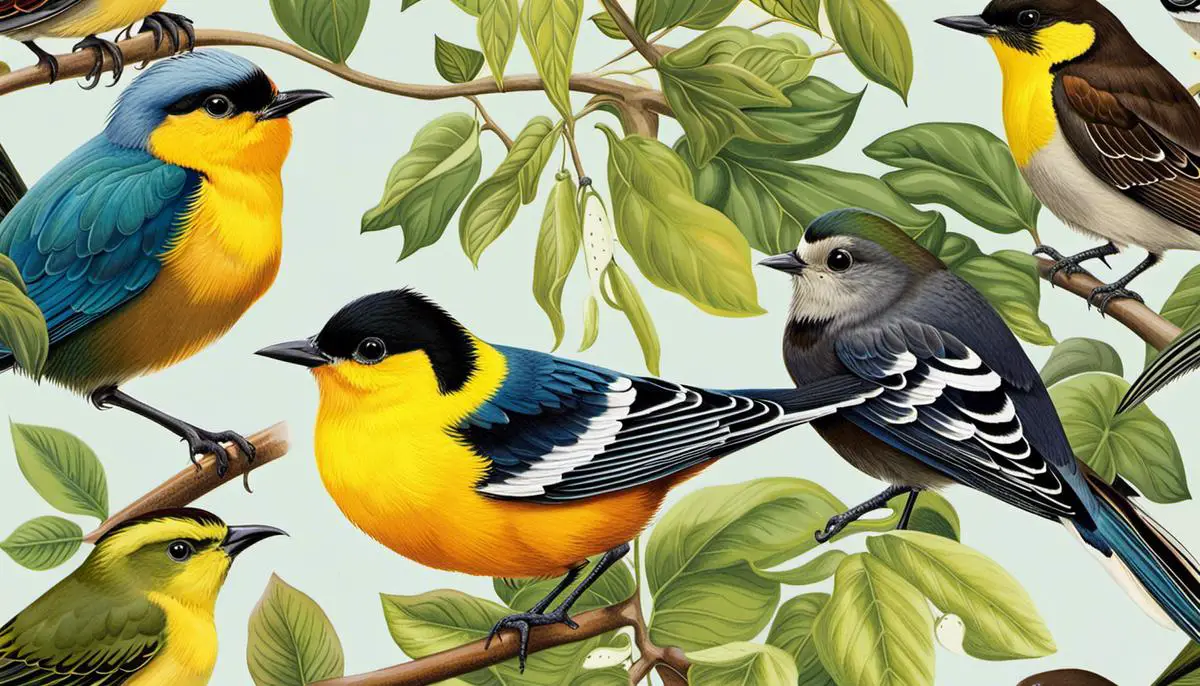
Different Species of Yellow-Bellied Birds in Texas
The Yellow-Bellied Sapsucker: A Seasonal Visitor
Among these diverse yellow-bellied birds is the Yellow-Bellied Sapsucker, a type of woodpecker that graces Texas with its presence during the colder months. Their yellow underparts are rather eye-catching, and the bars of black and white on their wings offer a stark contrast. They derive their name from their unique feeding habit – drilling wells into tree barks to sip on the sap, along with any insects that the sap attracts.
Bullock’s Oriole
The Bullock’s Oriole is a migratory bird found in Texas primarily during the summer breeding season. It boasts a bright orange-yellow belly and a distinguishing black eyeline. These birds are frequent feeders at nectar feeders and known for weaving hanging nests from trees.
Western Meadowlark
The Western Meadowlark is designated as the state bird of Kansas, Montana, Nebraska, North Dakota, and Oregon. Still, it can also be found in large numbers throughout Texas. Distinguishable by its bright yellow chest adorned with a black “v,” this bird has melodious songs that are often associated with the rural American west.
Yellow-Breasted Chat
The Yellow-Breasted Chat tends to populate Texas during summer for breeding and spring and fall for migration. This bird is particularly noticeable due to its bright yellow underside and contrasting olive-green back and wings. Their extensive repertoire of distinct song styles, mimicries, and calls is a key identifier of this species.
Couch’s Kingbird
Commonly found in southern Texas, the Couch’s Kingbird is identifiable by a lemon-yellow belly, contrasting against a light grey head and olive-grey back. It produces a sharp two-note call often transliterated as “Chi-WHEER,” to communicate or ward off intruders.
Yellow Warbler
Yellow Warblers, as you’d expect, have a vibrant yellow coloring all over their bodies. These birds migrate through Texas in both spring and fall, with some deciding to summer in the state for breeding. They are primarily identified by their unique, sweet song.
Prothonotary Warbler
The Prothonotary Warbler is a small bird with a unique golden-yellow underbelly and a blue-grey back. They prefer habitats near water bodies such as swamps or marshes. Although not common throughout Texas, they can be spotted particularly in the eastern parts of the state.
Geographical Distribution
Each of these species is found in various habitats across Texas, from the southern coastal areas to inland regions. Their presence in the state differs greatly based on season, migration, and breeding habits.
Abundance and Presence in Texas
There’s a remarkable variety of yellow-bellied birds in Texas, significantly contributing to the state’s rich biodiversity. Whether they’re native species or seasonal visitors, estos birds bring a unique combination of beauty and engaging avian sounds, enticing both seasoned bird watchers and casual passersby.
Though some of these yellow-bellied species are temporary residents, the annual arrival of these feathered wanderers has become an anticipated natural event. Such migrations not only signal the changing seasons, but also highlight Texas as an exceptional hub for bird-watching. You might easily spot species like the Western Meadowlark and Yellow-Breasted Chat. However, catching a glimpse of the elusive Prothonotary Warbler and Couch’s Kingbird might warrant a dedicated birding trip.

Habitat and Dietary Habits of Yellow-Bellied Birds in Texas
Preferred Habitats of Yellow-Bellied Birds in Texas
Yellow-bellied birds find habitats across Texas that meet their needs, with a marked preference for woodland or forest ecosystems. They can often be found in the serenity of parks, meadows, and even residential areas, where they have an abundance of food and nesting sites. Bodies of water like streams and wetlands also prove attractive, offering an assorted menu of insects and small fish.
Regional migration patterns reveal that many of these yellow-bellied birds are neotropical migrants. They spend winters in tropical lands like Latin America or the Caribbean, migrating back to North America for the breeding season. Texas plays a significant role during these migratory journeys, providing suitable habitats and plentiful food resources.
As far as the climate is concerned, yellow-bellied birds favor moderate temperatures, drawing them mostly to the warmer southern region of Texas. However, during the intense summer heat, you might locate these feathered species in the more temperate northern parts of the state.
Understanding the Dietary Preferences of Yellow-Bellied Birds in Texas
When it comes to their diet, the Yellow-Bellied Birds of Texas are far from being selective. Their primary nutrition comes from being insectivores, comprising of insects, arachnids, berries, small fruits, and occasionally small fish and amphibians. The variance in their diet is heavily influenced by the changing seasons and the availability of food in their habitats.
The breeding season of spring and early summer sees these birds favoring protein-rich insects and spiders, providing essential nourishment for their rapidly growing offspring. However, as fall approaches, and the insect populations start to fade, these birds adapt to consume more plant-based foods such as berries and small fruits, offering them the necessary energy reserves for their journey in the migration period.
Of note is the intriguing adaptive feeding behaviors these Yellow-Bellied Birds display. Practices like “anting,” where ants are rubbed on their feathers, presumably for nutritional or antimicrobial purposes and “flycatching,” capturing flying insects mid-flight, are common.
To summarize, the dietary habits of Yellow-Bellied Birds in Texas are influenced by seasons, availability, and environmental changes. A comprehensive understanding of these bird species, their migratory movements, preferred climates, and food choices can aid their preservation efforts and foster a deeper appreciation for these creatures.
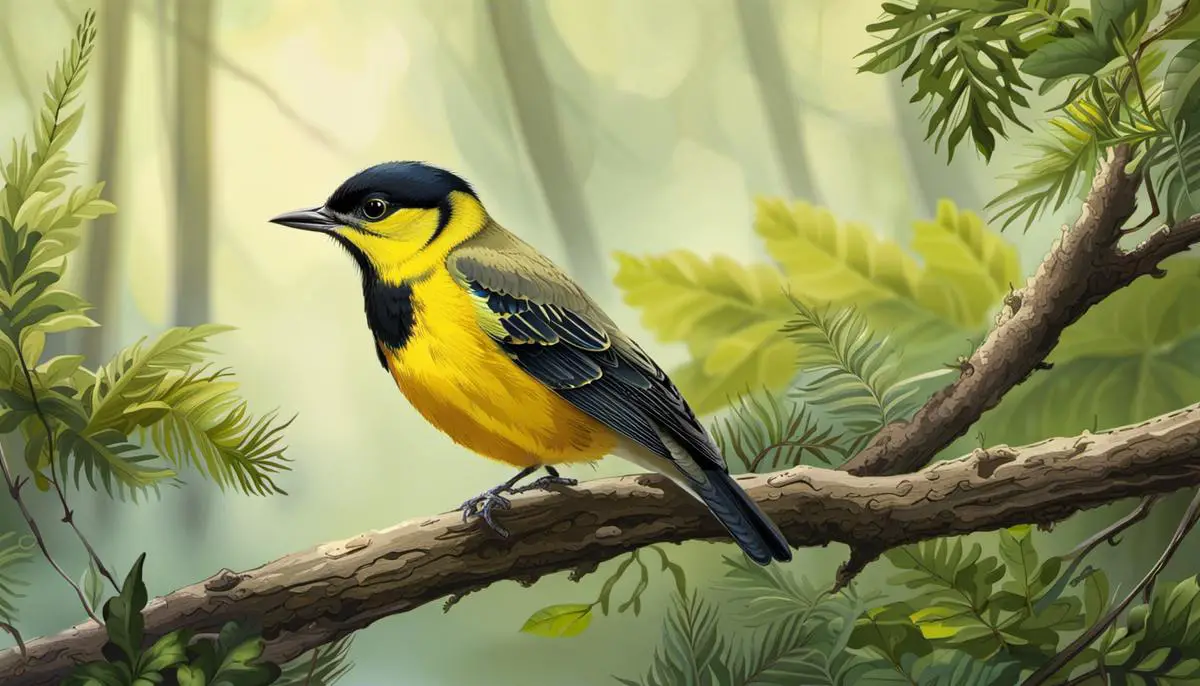
Impact of Yellow-bellied Birds on Texas Ecosystem
Unraveling the Ecological Contributions of Yellow-Bellied Birds in Texas
Birds such as the Yellow-bellied Sapsucker and the Yellow-bellied Flycatcher, commonly referred to as yellow-bellied birds, serve an indispensable role in the ecology of Texas. They play an integral part in the complex mesh of the ecosystem, contributing significantly to vital biological control processes, seed dispersal mechanisms, and biodiversity enhancement.
Biological Control
One of the primary ways in which yellow-bellied birds contribute to biological control in Texas involves their diet. Both the sapsucker and the flycatcher are insectivores, and their diet primarily consists of a variety of insects. By preying on these pests, these birds help to keep their population in check, indirectly aiding in the protection of crops and native plants as well as maintaining a balanced ecosystem.
Seed Dispersal
Seed dispersal is another important way in which yellow-bellied birds influence the Texas ecosystem. These birds consume a variety of fruits, and in the process, they ingest seeds. As they move from one place to another, they excrete these seeds, thereby facilitating the spread of various plant species. This natural seed dispersal can help ensure the sustainability of Texas plant species and is a critical process in the life cycle of many plants.
Biodiversity Enhancement
Yellow-bellied birds play a substantial part in enhancing biodiversity in Texas areas. They are known to be fairly adaptable to different habitats, including forests, grasslands, and urban areas. Their presence indicates a healthy, functioning ecosystem as they are a crucial part of the food chain, serving as prey to larger raptors or small mammals, and as a predator to insects.
Moreover, birds contribute to the “greening” of cities. Numerous urban areas are installing bird-friendly habitats, which simultaneously increase the green space in the city and reduce the urban heat island effect.
These yellow-bellied species also have an aesthetic and economic role to play. Their vibrant colors and pleasant songs enhance the natural beauty of an area and attract birdwatchers, both locals and tourists, which indirectly boosts the Texan economy.
The vast and diverse ecosystem of Texas provides a rich habitat for various species of birds, amongst which, the yellow-bellied ones play a significant role. These species, whether they are the Yellow-bellied Sapsucker, Yellow-bellied Flycatcher, or the Yellow-bellied Seedeater, have a considerable effect on biological control, seed dispersal, and improvement of biodiversity. They contribute significantly to the ecological balance across the state, thereby underpinning the imperative need for effective bird conservation efforts.
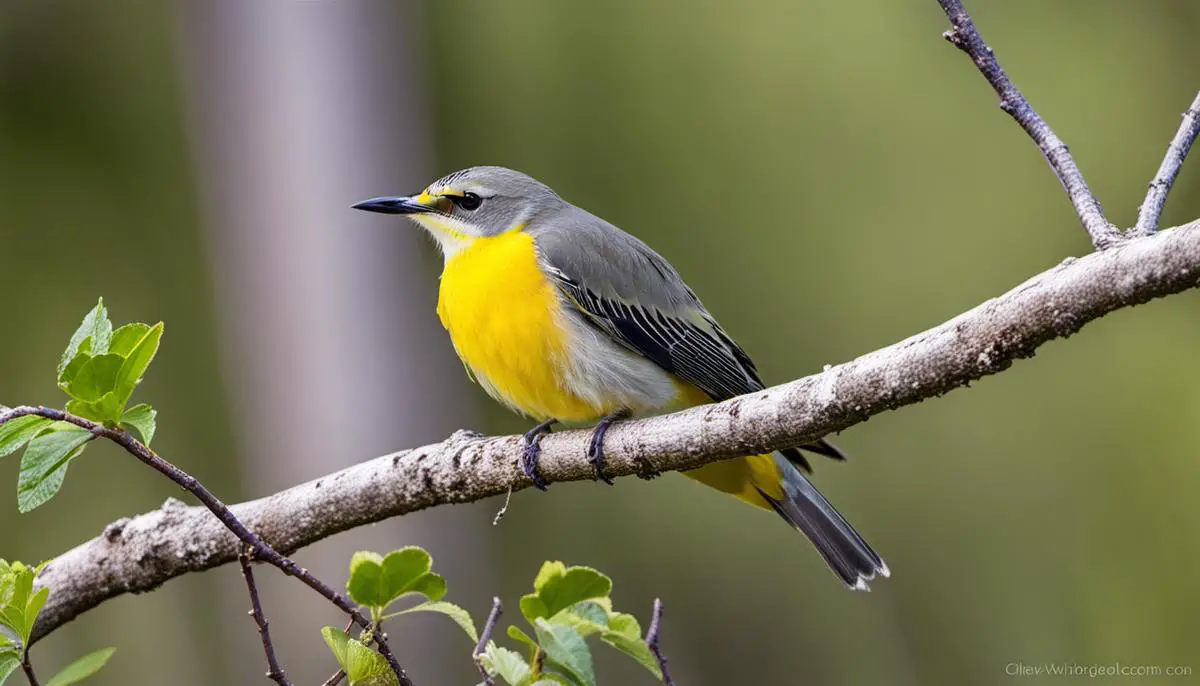
Conservation Status and Efforts for Yellow-Bellied Birds in Texas
Exploring the Conservation Status of Texas’s Yellow-Bellied Birds
The conservation landscapes of these yellow-bellied birds in Texas are quite diverse. For instance, in some geographical regions, the Yellow-bellied Sapsucker flourishes and is deemed secure, indicating robust population numbers. However, in other parts, this bird species faces conservation concerns.
Similarly, the Yellow-bellied Flycatcher seems to be in a more precarious situation due to a steady decline in its population. The reason primarily is the loss of its favorite habitat, the boreal forests. As for the Yellow-bellied Seedeater, it is listed as ‘least concern’ at present. Yet, their populations are being closely monitored because habitat loss could potentially threaten them in the future.
Threats to Yellow-Bellied Bird Species
Habitat destruction is a primary threat to yellow-bellied bird species across Texas. Rapid urban development, agricultural expansion, and deforestation, have led to the loss of vital habitats such as forests, nesting sites, and feeding areas for these birds.
Climate change is yet another environmental factor impacting yellow-bellied bird species in Texas. Changes in weather patterns, including higher temperatures and altered precipitation, combined with increasing severe weather events, can directly impact the survival and reproductive success of these birds. Birds are forced to adapt to new temperature and food availability patterns, a challenge that not all are able to meet. For migratory species, the shift in seasons can also disrupt their migration patterns, putting their survival at risk.
Conservation Efforts in Texas
Despite these challenges, concerted efforts are being made at different levels to conserve yellow-bellied bird species in Texas. These range from habitat conservation programs, introduction of legal protections, to species-specific recovery plans and actions.
For instance, the U.S. Fish and Wildlife Service has put effective plans in place to recover bird species of concern, like the Endangered Species Act (ESA) that can offer protection for threatened birds. Also, the Migratory Bird Treaty Act (MBTA) protects all migratory bird species, such as the Yellow-bellied Flycatcher, by regulating activities like hunting, trapping, or sale of the birds.
Non-profit organizations like The Audubon Society and the Cornell Lab of Ornithology also carry out extensive work in bird conservation. They conduct scientific research, restore habitats, run citizen-science projects, and influence policy to protect birds and their environments.
Community participation is another significant aspect of conservation efforts for these birds. Citizen science projects like the Great Backyard Bird Count and Christmas Bird Count are fantastic ways for the general public to get involved in bird conservation. These counts provide valuable data to scientists who study long-term trends in bird populations.
Conclusion
Through a combination of federal protections, conservation groups’ initiatives, and community involvement, there is hope for the conservation of yellow-bellied birds in Texas. With continued efforts, these birds can rebound from their threats, preserving the rich biodiversity of Texas.
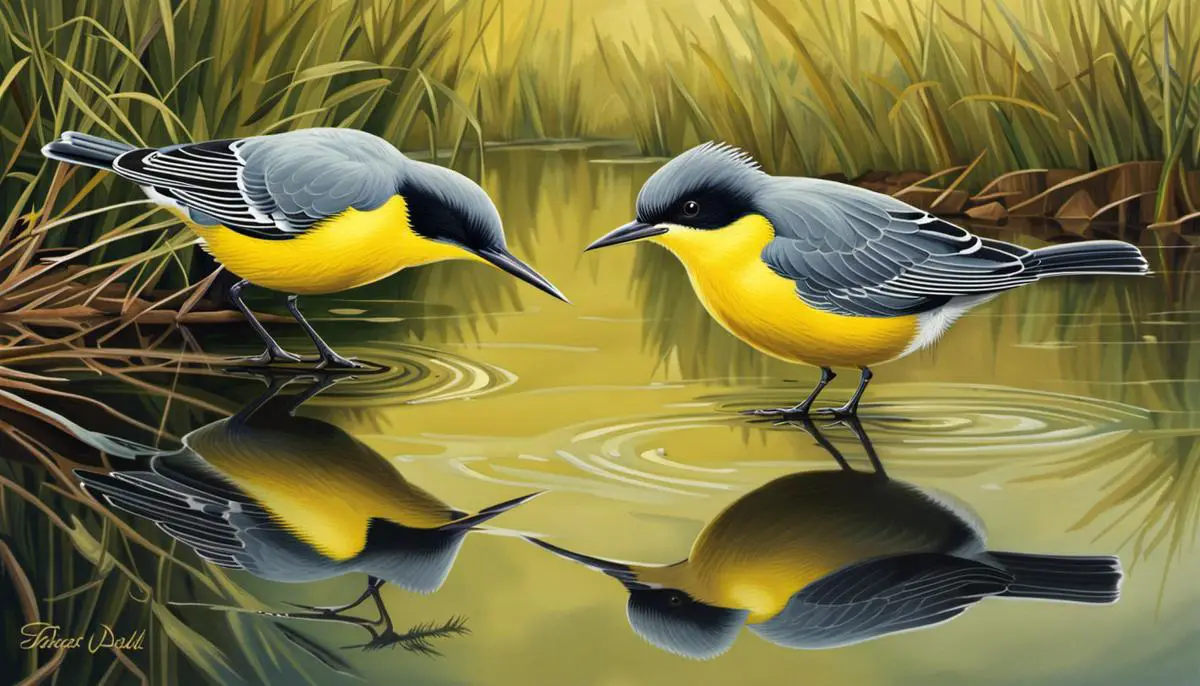
The ecological tapestry of Texas is enriched by the presence of yellow-bellied birds, their vibrant hues serving as a beacon of the region’s animal diversity. Their dietary preferences, habitat selection, and migratory patterns portray a rich weaving of life’s dynamism in the Texan landscape. Beyond their aesthetic value, these bird species exert considerable influence on the environment from biological control to seed dispersal, underpinning the complexity of the ecosystems they inhabit. Balancing nature’s equilibrium with the burden of human threats underlines a crucial chapter in their story, pinpointing our collective efforts for conservation as the script for their survival and prosperity in the future.
Yellow-Bellied Birds of Texas: FAQs
Q. What species of yellow-bellied birds can be found in Texas?
Texas is home to several species of yellow-bellied birds, including the yellow-bellied sapsucker, yellow-bellied flycatcher, and yellow-breasted chat.
Q. What habitats do yellow-bellied birds prefer in Texas?
Yellow-bellied birds in Texas are typically found in wooded areas, forests, and riparian habitats near water sources.
Q. What do yellow-bellied birds eat in Texas?
Yellow-bellied birds in Texas feed on a variety of foods, depending on the species. Yellow-bellied sapsuckers feed on sap and insects, while yellow-bellied flycatchers primarily feed on insects. Yellow-breasted chats feed on insects, fruit, and seeds.
Q. Are yellow-bellied birds migratory in Texas?
Yes, many species of yellow-bellied birds in Texas are migratory and will spend the winter months in Central and South America.
Q. What is the best time to see yellow-bellied birds in Texas?
The best time to see yellow-bellied birds in Texas is during the spring and fall migration periods. Some species, such as the yellow-bellied sapsucker, may also be present in the winter months.
Q. Are yellow-bellied birds of Texas endangered?
While some species of yellow-bellied birds in Texas, such as the golden-cheeked warbler, are listed as endangered or threatened, others, such as the yellow-bellied flycatcher, are more common and not considered endangered.
Q. What can I do to help protect yellow-bellied birds in Texas?
To help protect yellow-bellied birds in Texas, you can support conservation efforts by donating to organizations that work to protect their habitats, avoiding the use of pesticides and other harmful chemicals, and practicing responsible birdwatching etiquette.

